Here I’ll be continuing my backward-looking year-end movie rankings—following the last entry, for the year 2000, we arrive at 1999. As it turns out, ‘99 was a surprisingly strong year for movies, with still-potent hits like THE MATRIX, THE GREEN MILE, BEING JOHN MALKOVICH, EYES WIDE SHUT, THE SIXTH SENSE, GO, EXISTENZ, THE STRAIGHT STORY, A STIR OF ECHOES, BOYS DON’T CRY, THE INSIDER, ROSETTA and my two favorite films of the year: ELECTION and FIGHT CLUB. Both those films, FYI, were box office flops, yet both have gained a considerable amount of cult cachet in the ensuing years, and so won’t be turning up on the following list—which, as is in all my retro Year in Bedlam listings, is dedicated to overlooked and obscure films (thirty of them, to be exact).
The overlooked and obscure category, it turns out, overflows with worthy entries of its own, with quite a few worthwhile 1999 releases that didn’t make the cut (including MR. DEATH, IN CHINA THEY EAT DOGS, FELICIA’S JOURNEY, TITUS, LUNA PAPA and LAST NIGHT). As I said, it was a good year for movies, further proof of which can be found below…
30. TREASURE ISLAND
Bearing no resemblance to any previous TREASURE ISLAND, this is a black and white no-budgeter based on the famous WWII story about how the Nazis were fooled by fake documents stashed on a dead body. The film is set in the final days of WWII, with two spies readying the corpse in question, only to find it literally taking on a life of its own. It’s all done up in mock-1940’s cinema mode (complete with a phony movie theater newsreel at the beginning), but filled with soft-core sex and nudity. Some parts are genuinely disturbing, such as a dream sequence in a church (with “the body,” played by THIS BOYS LIFE’S Jonah Blechman, enthusiastically masturbating over one of the protagonists), and others are obnoxiously pretentious. Still, the DVD promo art is correct on one point: there really is nothing else like it.
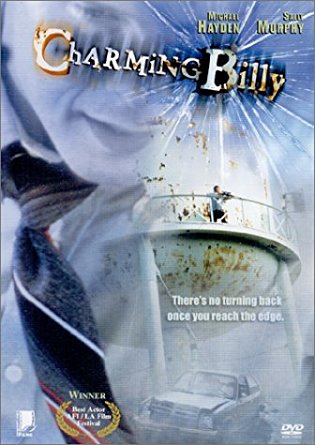 29. CHARMING BILLY
29. CHARMING BILLY
The killing spree of the “Texas Tower Killer” Charles Whitman has inspired more fictional treatments than I can count. Here’s one of the latest. It starts out with the titular Billy (Michael Hayden) climbing to the top of an isolated water tower and opening fire on every motorist and pedestrian who has the misfortune to pass by; what follows are detailed flashbacks revealing how Billy got to such a state. Billy, we learn, was born into an abusive household, never went to college and stayed a virgin until age 25. He ended up holding down two dead end jobs while leading an equally uninspiring home life, finally offing his wife and parents before making a beeline for the fateful tower. Appropriately impacting stuff, although the low budget hurts the film, which despite its makers’ valiant intentions is never as powerful as similarly minded classics like TARGETS and WHY DOES HERR R. RUN AMOK? CHARMING BILLY does at least benefit from an undeniably strong central performance by Michael Hayden.
28. BREAKFAST OF CHAMPIONS
Lots of people hate this movie. I don’t. Matter of fact, I think I might just love it–with the operative word being think. Based on what is probably Kurt Vonnegut’s most idiosyncratic novel, BREAKFAST OF CHAMPIONS recalls RAISING ARIZONA, TRUE STORIES, WILD AT HEART and Jerome Boiven’s severely underrated BARJO, yet remains stubbornly unique. It’s certainly writer/director Alan Rudolph’s nuttiest-ever work, and the same can be said for Bruce Willis’s turn as a crazy used car tycoon, Barbara Hershey as his crazy wife, Nick Nolte as a crazy cross dresser and Albert Finney as Vonnegut’s crazy alter-ego Kilgore Trout. The proceedings don’t always work, but I say one has to appreciate a film that so brazenly flirts with total insanity.
27. SIX WAYS TO SUNDAY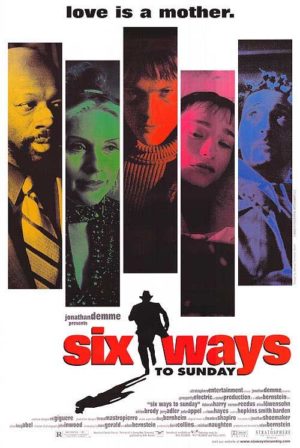
A deranged little number that follows in the footsteps of James Toback’s psycho classic FINGERS. Unfortunately, director Adam Bernstein is no Toback, and star Norman Reedus is definitely no Harvey Keitel. Still, SIX WAYS TO SUNDAY is quite odd and engrossing on its own terms, with a disturbed teen (Reedus) living with his possessive Ma while performing hits for the mob. Reedus has a downright psychotic temper, presented via POV shots through distorted lenses that occur just before he beats the shit out of somebody. The story grows more twisted (and bloody) as it goes along, and riveted my attention even when the production values were lacking (throughout, the paltry budget is all too apparent). The cast is filled with big names like Isaac Hayes, Elina Lowensohn, Adrien Brody and Deborah Harry as Reedus’s ma, who furthers the dementia by giving her son some VERY loving attention toward the end.
26. JOHNNY
A Canadian low-budgeter that’s tough, unsparing and quite compelling. It’s about a bunch of homeless kids living on the streets of Toronto, led by a sociopathic would-be filmmaker named Johnny (Chris Martin). Johnny is never without his video camera, constantly trying to fit everyone around him into the cinematic drama he envisions, regardless of whether his “friends” get hurt, arrested or killed in the process. In the course of the film Johnny manages to draw a new recruit into his orbit, seduces a naïve teenager, attempts to make a verite porn video and repeatedly harasses a video store owner (who unwisely fights back). Despite uneven performances and some less-than-convincing dialogue, writer-director Carl Bessai succeeds in capturing the unforgiving realities of Canadian street life with a great deal of energy and cinematic ingenuity. JOHNNY, FYI, was the first-ever North American film to be shot according to the rules of the Lars Von Trier initiated Dogma ‘95 manifesto, although it wasn’t officially certified as such (Von Trier apparently wanted $3,000 for the privilege of doing so, which the cash-strapped Bessai opted not to shell out).
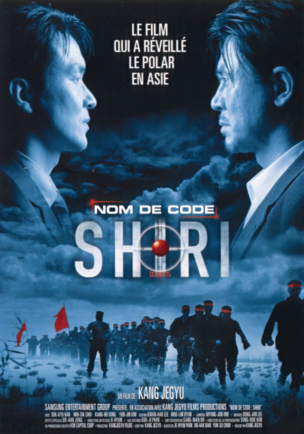 25. SHIRI
25. SHIRI
SHIRI, the onetime highest-grossing Korean film of all time, is an impressive fusion of politics, romance and balls-to-the-wall action. It’s about a band of wackos looking to reunite North and South Korea through a series of terrorist actions, carried out by a babe sharp-shooter. I found the film somewhat incoherent overall (which in fairness may be due to re-editing for the American release), but the plentiful action scenes are appropriately brutal and diverting. I’m sure much can be—and has been—said about SHIRI’S political angle, but I was content to simply sit back and bask in all the superbly wrought gunfire and ass-kicking.
24. CHERRY FALLS
A late-nineties slasher flick that’s a mite cheesy, but contains many agreeable elements. It’s about teens stalked by a serial killer who, in direct contrast to most movie psychos, only kills virgins. This inspires the local teen populace to throw a big party in order to deflower the remaining virgins in their midst, but there’s a wild twist in the works. The director was Australia’s talented Geoffrey Wright, who was coming off ROMPER STOMPER and METAL SKIN. CHERRY FALLS isn’t in the same league as those lacerating masterworks, but is a fun and even subversive little film, with a winning lead performance by the late Brittany Murphy and an unforgettably outrageous climax that has the killer going about his demented handiwork in the midst of an orgy!
23. KUSAH HAKWAAN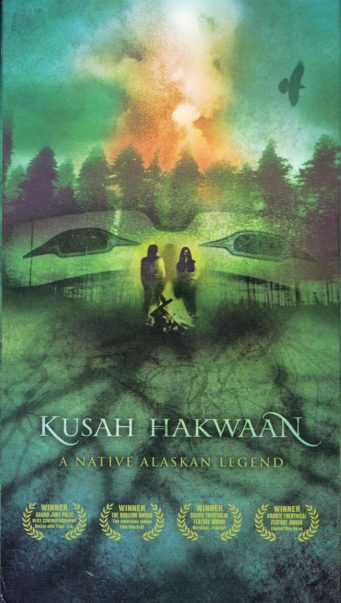
Another of those no-budget wonders that demands the viewer be VERY forgiving, but offers up some real rewards. In some respects KUSAH HAKWAAN’S dime store veneer actually works to its advantage, giving the proceedings the go-for-broke feel of fantasy cinema from countries like Hong Kong and Indonesia. The first-ever dramatic Alaskan film made by Alaskans, and also the first to feature dialogue in the Tlingit language, the film is set amid a Tlingit gathering in which a tribal elder (Kuth Ka) relates the story of Kusah Hakwaan, or “Demon Cannibal.” In the story, the dramatization of which takes up much of the film, brothers Shawan (Don Savage) and Yuntun (Paul Asicksik) set off on a hunt in the wilderness, where Kusah Kakwaan (Diane E. Benson) also happens to be afoot. Obviously producer-director Sean Morris lacked the resources to properly depict the elaborate special effects called for by the script–which include people transformed into trees and mountains rising out of the ground–but it’s the audacity of Morris’s approach and the ingenuity with which he goes about relating his narrative that make this a quality product.
22. DYING OF LAUGHTER (MUERTOS DE RISA)
A COMPLETELY outrageous screwball comedy from Spain’s Alex De La Iglesia. DYING OF LAUGHTER lacks the macabre edge of past Iglesia opuses like DAY OF THE BEAST and PERDIDA DURANGO, but still manages to take his off-kilter style to lofty heights of comedic lunacy. Real life comedy greats Santiago Segura and El Gran Wyoming play two guys who unwittingly become stars with an act that basically consists of one of them slapping the other repeatedly. People think the vehemence is an act, but these guys really hate each other’s guts, and as their act grows more successful their rivalry intensifies, until they truly want to kill each other. This is, obviously, a VERY black comedy, but the style is so broad and cartoony that the proceedings are never too disturbing. The film overall showcases Iglesia at his most inspired; particularly memorable bits include a climactic car chase and the surreal sight of the protagonists getting their insides eaten out by maggots.
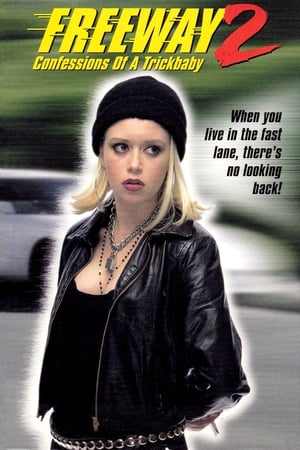 21. FREEWAY 2: CONFESSIONS OF A TRICK BABY
21. FREEWAY 2: CONFESSIONS OF A TRICK BABY
This was writer-director Matthew Bright’s follow-up to his lovably sicko directorial debut FREEWAY (1995). It’s not technically a sequel, although CONFESSIONS OF A TRICK BABY contains many similar elements, including a feisty blonde in the lead (Natasha Lyonne) and a plot that perversely riffs on a beloved fairy tale, in this case Hansel and Gretel (it was Little Red Riding Hood in the original). What really put FREEWAY over the top for me was the amazing lead performance of Reese Witherspoon, who made me a fan for life; Lyonne admittedly isn’t quite as strong, but she comes surprisingly close. This flick is actually superior to its predecessor in many aspects, starting with the story, which with its depictions of serial killing, projectile vomiting, lesbianism and necrophilia is far more twisted and inventive than that of FREEWAY. I could, however, have done without the crappy riot grrrl tunes that pepper the soundtrack!
20. THREE BUSINESSMEN
A lovably weird comedy from the always-iconoclastic Alex Cox that rips off THE DISCREET CHARM OF THE BOURGEOIS. There are certainly worse things to rip off! THREE BUSINESSMEN’S foremost charm is that it’s never predictable as it follows two art dealers, one British (Cox) and one American (Miguel Sandoval), who meet in a secluded hotel. They sit down to dinner only to find that the kitchen is deserted. Undaunted, they head off in search of another restaurant, where they’re again stymied in their quest for sustenance…and so on, as they find themselves somehow tramping across four different continents (Britain, Japan, Hong Kong and India, to be exact), until they meet the elusive third businessman and finally get to eat. This film is never as profound as it seems to think it is, but the proceedings are quite likeable, and Debbie Harry sings a mighty cool song over the end credits.
19. WHEELS (TOCKOVI)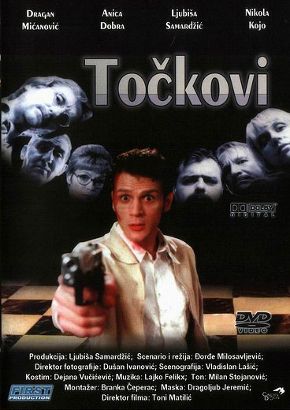
This would seem to be Serbia’s attempt at the type of Quentin Tarantino wannabes that were so chic during the 1990s. It features a young dude caught in a rainstorm who seeks shelter in a nondescript roadside hotel. The place, needless to add, turns out to be anything but nondescript, harboring a bevy of dangerous individuals, all with complex backstories and equally complex motives. The protagonist is tied up but escapes with a pistol, which comes in mighty handy against the many psychopathic personalities arrayed against him. Technically the film isn’t up to the standards of its American forebears, but it is quite slick, fueled by a consistently surprising narrative and much diverting black-humored violence.
18. PLAY IT TO THE BONE
My favorite post-WHITE MEN CAN’T JUMP Ron Shelton film. The plot is yet another variation on Shelton’s standard liberated-chick-strings-along-two-lugs formula, with Lolita Davidovich (aka Mrs. Ron Shelton) driving boxers Woody Harrelson and Antonio Banderas to a match in Vegas, fully aware that both are smitten with her. It seemed to me that the feminist angle was meant primarily to counter-balance all the macho posturing by the male protagonists—which, of course, was the element I enjoyed the most. I also appreciated the amazing climactic slugfest with Harrelson and Banderas pounding the shit out of each other, definitely one of the bloodiest, most intense boxing sequences ever.
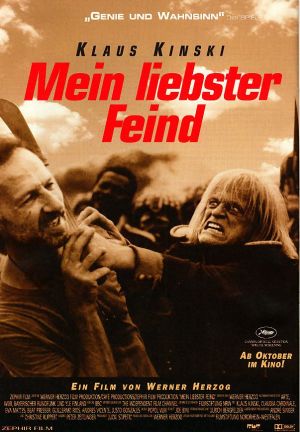 17. MY BEST FIEND (MEIN LIEBSTER FEIND—KLAUS KINSI)
17. MY BEST FIEND (MEIN LIEBSTER FEIND—KLAUS KINSI)
In which German filmmaking legend Werner Herzog details his tempestuous relationship with madman actor Klaus Kinski. Anyone who’s read the latter’s autobiography ALL I NEED IS LOVE (reprinted as KINSKI UNCUT) well knows that the man was an absolute terror to everyone with whom he came into contact. Herzog, however, was every bit as nutty himself, certainly the only plausible explanation for why he worked with Kinski a whopping five times (on AGUIRRE: THE WRATH OF GOD, NOSFERATU, WOYZECK, FITZCARRALDO and COBRA VERDE). Among the many “bad Klaus” stories related here are remembrances of Kinski demolishing a bathroom, randomly firing a gun at some extras on the AGUIRRE set and freaking out whenever he wasn’t the center of attention. Herzog also includes a number of well-chosen clips from the films in question, in addition to outtakes from the celebrated Les Blank documentary BURDEN OF DREAMS (about the making of FITZCARRALDO), in which we see Kinski at his ranting, vitriolic best.
16. MIGRATING FORMS
The influence of David Lynch hangs quite heavily over this film, underground auteur James Fotopaulos’ follow-up to his underwhelming 1997 debut ZERO. MIGRATING FORMS is far better than the former film, which like this one was a black and white dirge heavily inspired by ERASERHEAD. Here, though, Fotopaulos evinces some genuine filmmaking talent, conjuring up a downright otherworldly mood to go with his bizarre imagery. It features a young man and woman residing inside a strikingly sparse and featureless apartment situated in a horrific urban hellscape, where they spend lots of time screwing. The woman has a weird cyst growing out of her back and, after she bites him, the guy develops a similar cyst on his right arm. That about sums up the narrative of this thoroughly disquieting oddity that, like ERASERHEAD, is guaranteed to leave a permanent mark on the viewer’s psyche.
15. BLACK CAT, WHITE CAT (CRNA MACKA, BELI MACOR)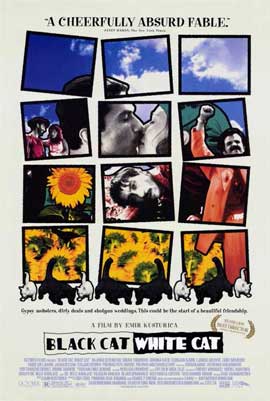
Serbia’s Emir Kusturica is one of the world’s most vital filmmakers, and here delivers a joyously vulgar, Fellini-esque look at gypsy life. That’s a culture Kusturica previously explored in 1988’s TIME OF THE GYPSIES, probably his masterpiece—BLACK CAT, WHITE CAT, by contrast, is much closer in tone to Kusturica’s screwball follow-up ARIZONA DREAM. Ice-packed corpses in the attic, a jerry-rigged outhouse, disappearing midgets, a fat woman who can pull nails (but with what?)…there’s so much sheer exuberance in this film that it’s nearly beyond description. Of course, there’s not a whole lot of depth to it, either…
14. JOE THE KING
While far from great, this indie from first time writer-director Frank Whaley (best known as an actor in films like PULP FICTION and SWIMMING WITH SHARKS) has some powerfully moving moments. Apparently semi-autobiographical on the part of Whaley, it’s about Joe (Noah Fleiss), a kid growing up in a depressed town sometime in the late seventies. Joe’s father (Val Kilmer) is an abusive shithead and his mother (Karen Young) a workaholic drunk, while Joe himself is forced to work in a greasy spoon restaurant despite the fact that he’s underage. The film overall is a bit too whiney and self-pitying for my tastes, with much bad acting—that does NOT, however, include the work of Mr. Fleiss, who turns in what is certainly one of the decade’s most impressive kid performances. There’s also a great father-son moment toward the end that goes a long way toward smoothing over many of the film’s problems.
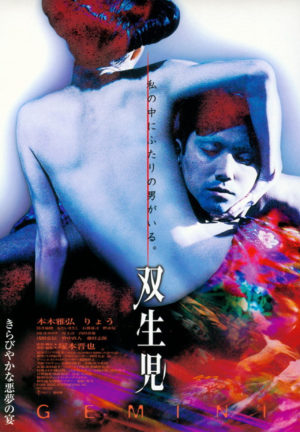 13. GEMINI (SOSEIJI)
13. GEMINI (SOSEIJI)
Japan’s inimitable Shinya Tsukamoto was in rare form here. GEMINI has a familiar Tsukamoto premise concerning two testosterone-addled dudes in a literal battle to the death over the affections of an attractive woman. This time around the narrative, adapted from an Edogawa Rampo story, takes place in feudal times, with a prissy doctor (Masahiro Motoki) finding himself in competition with his long-lost twin for the love of his amnesiac wife (Ryo), who harbors unsavory secrets of her own. As usual, Tsukamoto’s storytelling is cluttered and the camerawork (all of it handheld) excessively jittery, even if the film overall lacks the adrenaline-fueled drive that characterized Tsukamoto’s earlier work. GEMINI works, though, as an immersive wallow in filth, anxiety and despair, with a unique visual splendor that only Shinya Tsukamoto could achieve.
12. LEGEND OF THE SACRED STONE (SHENG SHI CHUAN SHUO)
An astonishing, eye-popping achievement, an all-puppet(!) martial arts fantasy from Taiwan. The story is a mite convoluted, involving a search for a sacred stone that can grant its holder any wish. It’s sought by a cast of characters that include several “Unfriendlies,” grim reaper-like freaks who can fly through the air and change into exact doubles of their enemies, as well as two warring brothers, an old wizard and the latter’s weepy daughter. The action is fast and furious, and the puppetry simply astonishing; this is very likely the most technically accomplished puppet movie I’ve seen, with astonishingly elaborate miniature props, lots of CGI effects (not quite up to Hollywood standards, but still quite impressive) and incredible acrobatic fight sequences.
11. BROKEN VESSELS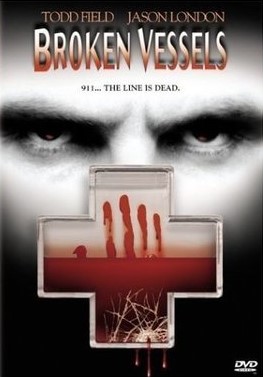
This film has become infamous for its packaging by A-Pix video, who provided DVD cover art that blatantly copied the one-sheet for BRINGING OUT THE DEAD, and even included a blurb referencing “the upcoming Martin Scorsese film.” Personally, I think BROKEN VESSELS is everything Scorsese’s film should have been. It’s about a naïve young paramedic (Jason London) partnered with a drugged-out nutcase (Todd Field) who gets sucked into the wonderful world of sex, drugs and rock ‘n roll, paramedic-style. Despite some bits where the budgetary constraints are painfully apparent, the film has a jittery edge and propulsive energy that BRINGING OUT THE DEAD lacked. It’s also far more cynical about its “heroes,” who we see robbing the house of one of their patients, hitting others up for drugs and sexually assaulting a comatose woman. To take another quote from the video box: “You’ll think twice about calling 911!”
10. THE WOMAN CHASER
A low-budget comedy based on Charles Willeford’s pulp masterpiece from the sixties. I found THE WOMAN CHASER’S overall tone a bit too jokey (in contrast to the novel, which worked precisely because it relayed its outrageous story without much overt humor), but writer-director Robinson Devor imparts some impressively fluid and expressive black and white visuals that harken back to the days when people really knew how to do this stuff, and Patrick Warburton is perfection in the lead role. His mannerisms and overall appearance are so thoroughly sixties-chic he essentially succeeds in doing Devor’s job of imparting period detail for him. Plus, it’s difficult to go wrong with Willeford’s twisted tale of a deranged used car salesman-turned low-budget filmmaker (Warburton), who creates a mini-epic about a fed-up truck driver—unfortunately the finished film is too short to qualify for feature film status, which leads to trouble with the financiers, and a rather compulsive (and psychotic) action by Warburton upon learning the ultimate fate of his masterpiece.
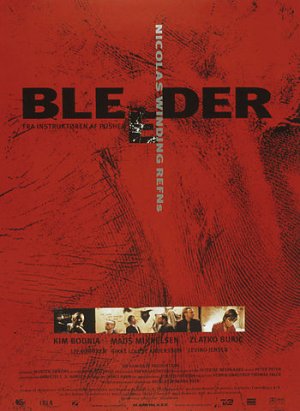 9. BLEEDER
9. BLEEDER
The second feature by Denmark’s Nicolas Wending Refn was this blistering depiction of aimlessness and desperation in an urban milieu. With its loose, reality-flavored framework it’s not unlike the films of John Cassavetes or 1970s-era Martin Scorsese, albeit with a more psychotic edge. The main characters are an introverted video store clerk, played by Mads Mikkelsen, and his severely disaffected best friend, essayed in unforgettable fashion by Kim Bodina. His is one of the most moving performances in a career that has seen more than its share of great acting, with a smoldering intensity that unnerves; it’s clear an explosion is coming, as indeed it does in an extremely violent climax whose particulars are foreshadowed by the film’s title and many red screen transitions. The other actors are good too, although none of them galvanize the proceedings like Bodina does. Beyond that, I could have done without all the annoying film nerd references that go with the video store setting (such as a never-ending list Mikkelsen recites of his favorite directors, which evidently match those of the film’s writer-director), but at its best BLEEDER is hard to match, much less beat.
8. NOWHERE TO HIDE (INJEONG SAJEPONG BOL GEOT EOBTDA)
Full disclosure: I detested this Korean actioner upon first viewing it back in ‘99, finding it overwrought, pretentious and annoying. My criticisms weren’t entirely off-base, as the film doesn’t work at all as action, being hyper-stylized to an absurd degree and scored primarily by the mournful Bee Gees tune “Holiday” (not exactly what you’d call pulse-pounding action movie music). Yet I’ve found myself returning to NOWHERE TO HIDE numerous times in the ensuing years, and indeed, taken as an art film it is rather remarkable. Director Lee Myung-Se has a fully assured visual style, and also evinces an impressive grasp of tone, which he adroitly manipulates (often in a single scene) in a manner not unlike Francois Truffaut did back in the sixties. The narrative, for the record, involves mismatched detectives pursuing a drug dealer through the night streets of South Korea—pretty much every scene in this film takes place at night, amidst a flood of neon—resulting in a lot of pictorially rapturous slow motion action sequences.
7. SUMMER OF SAM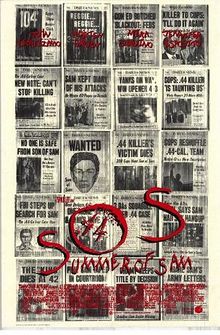
From Spike Lee, a wildly overbaked yet vital account of the summer, 1976 Son of Sam killings. It was Lee’s first “white” movie, meaning that in contrast to most of his previous films the cast is largely Caucasian. Among those cast members are John Leguizamo as a studly hairdresser, Mira Sorvino as his hot GF and Adrien Brody as a punk rock enthusiast, all of whom find themselves caught up in the atmosphere of fear and distrust that overtook NYC during that fateful summer. There are impressive elements, but also quite a few annoying ones, such as the messy narrative and distracting conveyer belt-cam that has the effect of making actors move while standing still (an effect Lee insists on using in nearly all his films). The good stuff, however, ultimately outweighs the bad. Lee makes excellent use of tunes like the Who’s “Teenage Wasteland” and “Won’t Get Fooled Again” and Abba’s “Dancing Queen,” and the recreation of Disco-era New York feels authentic. “Sam” is as much a psychological force here as he is a physical one—and a good thing, as the scenes of the killer (Michael Badalucco) harassed by a talking dog are seriously goofy—that infects people’s minds, transforming how they interact and have sex. The sexual content, it must be said, is quite strong for a big studio movie, which gives it a definite edge (and probably contributed to its failure at the box office). SUMMER OF SAM may be long-winded, but it has a lot of uncomfortable truths, and is even, in its own wonky, bulging-at-the-seams manner, quite exciting.
6. RAVENOUS
A mean, brutal, irresistible horror western from England’s Antonia Baird. It was one of a handful of interesting movies made by Fox 2000 productions in ‘99 (FIGHT CLUB was another) whose likes will probably not be seen again. The premise is a weird one that probably shouldn’t work but does, involving a freaky dude (Robert Carlyle) captured by a band of soldiers during the Mexican-American war. He tells a horrific tale about being trapped with his family in a cave and having to resort to cannibalism. Against their better instincts the soldiers let Carlyle lead them to the cave, only to find that he’s double-crossed them. LOTSA mayhem ensues, as cannibalism, according to this movie, is an addictive disease a la vampirism. Baird keeps things jumping with a gritty atmosphere of snow bitten despair and impending doom (it was shot in the forbidding, snow-covered mountains of Germany), counterpointed by an outrageous strain of black comedy. There’s also enough gore to please H.G. Lewis, and a quirky faux-Bluegrass score that put me in mind of the maestro’s 2000 MANIACS.
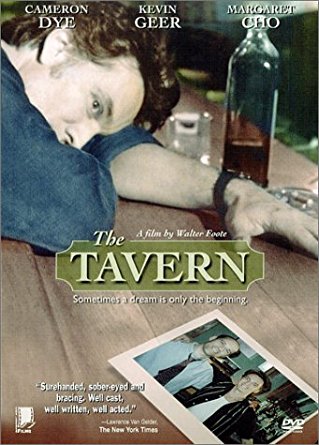 5. THE TAVERN
5. THE TAVERN
This one snuck up on me. I didn’t expect to be so moved by a simple, straightforward film about two guys trying to manage a modest NYC tavern, yet I found it nearly impossible not to get caught up in it. I rooted for the enthusiastic protagonists (Cameron Dye and Greg Zittel) to achieve their dream, and found it quite upsetting watching them slowly run their business into the ground. The many problems they encounter—recalcitrant employees, competition from other taverns, neighborhood complaints, and of course money (or lack thereof)—are all too believable, and the flawless performances reinforce that immaculately conveyed sense of realism. A painful film, but a necessary one.
4. AMERICAN MOVIE
AMERICAN MOVIE, one of the best documentaries in many a year, documents the making of a 35-minute film called COVEN. Of that flick, a black and white bummer about a guy getting sucked into an evil support group, the less said the better. But its 30-year old creator Mark Borchardt is a true character, and watching him trying to make COVEN is lots more entertaining than the finished product. We meet the fast-talking Mark, his hilariously monotone acidhead buddy Mike Schank, his doddering uncle Bill (COVEN’S “Executive Producer”) and lots more eccentric folk living in Mark’s Wisconsin hometown. Director Chris Smith never condescends to his subjects, simply observing Mark and the gang fumbling their way through the three-year production of “COH-VEN” (according to Borchardt, the correct pronunciation “sounds too much like oven”). Just as intriguing are the details of Mark’s day-to-day life, which include his jobs as cemetery caretaker and delivery boy, and his strained relationships with his ex-wife and three children. We see what a tremendous burden it is, financially and otherwise, for Mark to complete his film. COVEN may suck, but its maker’s perseverance is to be applauded.
3. OUR LADY OF THE ASSASSINS (LA VIRGEN DE LOS SICARIOS)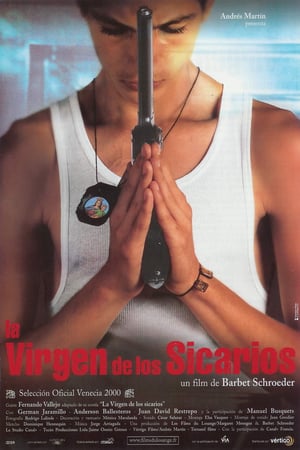
After years of toiling in the Hollywood machine the once great Barbet Schroeder regained his former prestige with this stunning Columbia set quasi-thriller. Refraining from judgement, Schroeder follows a gay writer (German Jaramillo) through an affair with a street kid (Anderson Ballesteros). The writer is revisiting the city of his childhood (as was Schroder), which is now overrun with drugs and violence. The kid, like seemingly everyone in this place, is a remorseless killer, and gradually draws his older charge into a morality-free world of casual murder. The whole thing is, like all of Schroeder’s best work (which includes MORE, MAITRESSE and BARFLY), utterly mesmerizing and totally convincing from start to finish, chillingly portraying a land where churches are overrun with crackheads and fireworks are shot off to celebrate the latest shipment of cocaine to the USA.
2. SPECTRES OF THE SPECTRUM
An astounding sci fi collage from San Francisco filmmaker Craig Baldwin, of 1991’s 45-minute TRIBULATON 99, one of my absolute favorite flicks. SPECTRES OF THE SECTRUM takes the aesthetics of TRIB 99 and stretches them to feature length, complete with honest-to-goodness characters. Yogi, a media revolutionary living in the year 2007, resides with his telepathic daughter BooBoo in a secluded trailer in the Nevada desert. Yogi broadcasts over a pirate radio station, educating his listeners on figures like Nikolai Tesla and Wilhelm Reich, while BooBoo dreams of traveling back in time to find a secret message encoded on an old TV talk show. As in TRIB 99, nearly the entire film is composed of found footage from old educational shorts, TV and movies. Baldwin has dredged up some amazing clips without question (in particular an elephant getting electrocuted and William Shatner shilling for some unnamed corporation), but it’s the artfully kinetic way he pieces them all together that makes his film such a mind-roaster. Baldwin also imparts a stern message about media consolidation and its ultimate consequences. No work of art has made me think deeper about our media landscape since Godfrey Reggio’s NAQOYQATSI (2002)–which, come to think of it, has quite a few things in common with this film. NAQOYQATSI, after all, roughly translates as “Life as War,” a good summation of Baldwin’s overriding concerns.
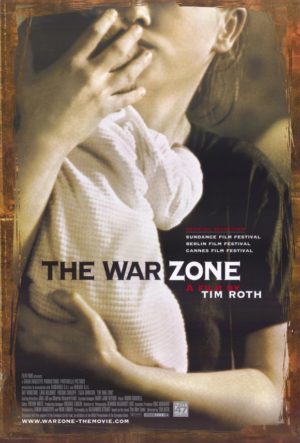 1. THE WAR ZONE
1. THE WAR ZONE
Unquestionably one of the most powerful films of the nineties, and quite possibly the most impacting depiction of child abuse ever put on screen. The directorial debut of Tim Roth, THE WAR ZONE is a precisely observed and unerringly truthful depiction of a British family torn apart by abuse. It’s told from the point of the view of a teenage boy (Freddie Cunliffe) who comes to suspect, correctly, that his father (Ray Winstone) is sexually abusing his sister (Lara Belmont). This leads to all sorts of horrific upheavals, among them bullying, self-mutilation and murder. Roth sugar-coats none of this, yet his film is never exploitive or sensationalized in any way. Another noteworthy element is the sumptuous widescreen photography and gorgeous coastal scenery, which belay the type of claustrophobic kitchen sink realism one might expect. Roth also coaxes flawless performances from his largely inexperienced cast members in a film whose impact can be summed up by its title.
